 Published in 2020 by The Rosen Publishing Group, Inc. 29 East 21st Street, New York, NY 10010 Copyright 2020 by The Rosen Publishing Group, Inc. All rights reserved. No part of this book may be reproduced in any form without permission in writing from the publisher, except by a reviewer. Editor: Rachel Gintner Designer: Michael Flynn Photo Credits: Cover PeopleImages/E+/Getty Images; cover, pp.. Library of Congress Cataloging-in-Publication Data Names: Klimchuk, David, author.
Published in 2020 by The Rosen Publishing Group, Inc. 29 East 21st Street, New York, NY 10010 Copyright 2020 by The Rosen Publishing Group, Inc. All rights reserved. No part of this book may be reproduced in any form without permission in writing from the publisher, except by a reviewer. Editor: Rachel Gintner Designer: Michael Flynn Photo Credits: Cover PeopleImages/E+/Getty Images; cover, pp.. Library of Congress Cataloging-in-Publication Data Names: Klimchuk, David, author.
Title: You can fix it: solving problems / David Klimchuk. Description: New York: PowerKids Press, [2020] | Series: Spotlight on social and emotional learning | Includes index. Identifiers: LCCN 2019005179| ISBN 9781725307049 (pbk.) | ISBN 9781725307070 (library bound) | ISBN 9781725307056 (6 pack) Subjects: LCSH: Problem solving in children--Juvenile literature. | Decision making in children--Juvenile literature. Classification: LCC BF723.P8 K585 2020 | DDC 155.5/1343--dc23 LC record available at https://lccn.loc.gov/2019005179 Manufactured in the United States of America CPSIA Compliance Information: Batch #CWPK20. For further information contact Rosen Publishing, New York, New York at 1-800-237-9932.
Contents CHAPTER ONE FIXING THE PROBLEM Have you ever had problems come up at school, at home, or out in your community? Have these problems ever left you feeling confused or ? If so, youre not alone! Every day, people deal with problems of all shapes and sizes. For some, their problem may be that they dont understand their math homework. For others, it might be dealing with the death of a loved one. No matter what problems youve had, youve probably found yourself wondering what to do. Maybe youve even felt a little hopeless. There are many different problem-solving skills that can help you break down the issue and improve the situation.
Problem-solving skills can be helpful for decreasing , these skills will help guide you in the right direction. 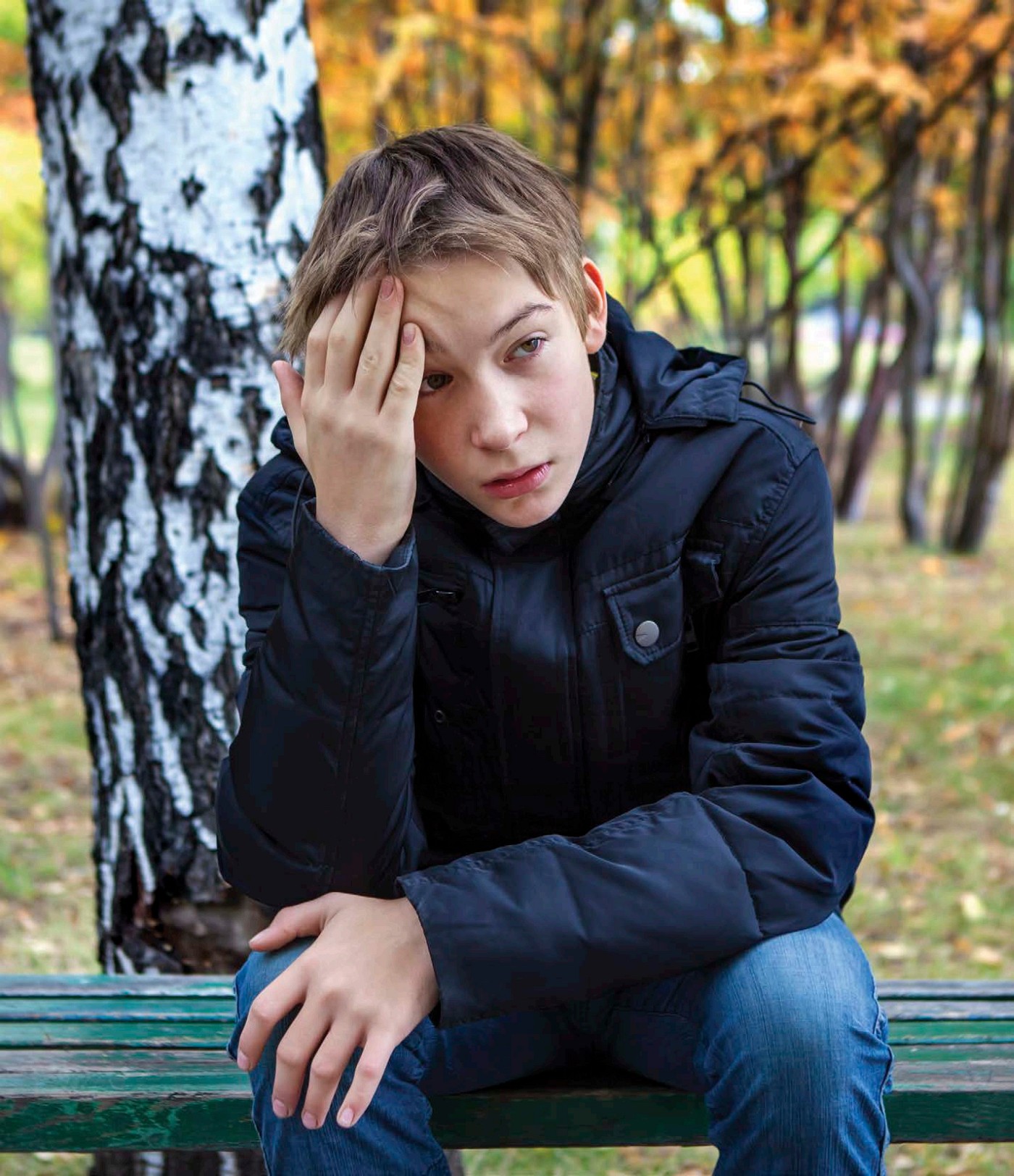 Sometimes problems create stress and cause panic. In these moments, its important to remember that everyone experiences problems and there are solutions at hand. CHAPTER TWO MAKING GOOD CHOICES Solving problems is a key part of growing up and learning responsible decision-making. Its easy to act quickly and impulsively, or without thought, when we dont know what to do or if were feeling scared. This sometimes makes the situation worse and doesnt get us closer to solving the problem.
Sometimes problems create stress and cause panic. In these moments, its important to remember that everyone experiences problems and there are solutions at hand. CHAPTER TWO MAKING GOOD CHOICES Solving problems is a key part of growing up and learning responsible decision-making. Its easy to act quickly and impulsively, or without thought, when we dont know what to do or if were feeling scared. This sometimes makes the situation worse and doesnt get us closer to solving the problem.
Responsible decisionmaking involves looking closely at situations, reflecting on them, and thinking about the consequences of our actions. 
 Taking time to think about a problem and a healthy way to solve it can help you make better decisions. Learning skills for responsible decision-making can help you improve your life by decreasing stress and giving you something to be proud of. When you feel good about the decisions you make, youll be more likely to keep making the right choices in the future. Becoming a good problem solver takes time, but the more you learn and the more you practice, the easier it will be. CHAPTER THREE CHECKING IN WITH YOURSELF When we face a problem, we feel various emotions that change the way we think about the problem.
Taking time to think about a problem and a healthy way to solve it can help you make better decisions. Learning skills for responsible decision-making can help you improve your life by decreasing stress and giving you something to be proud of. When you feel good about the decisions you make, youll be more likely to keep making the right choices in the future. Becoming a good problem solver takes time, but the more you learn and the more you practice, the easier it will be. CHAPTER THREE CHECKING IN WITH YOURSELF When we face a problem, we feel various emotions that change the way we think about the problem.
When we feel our emotions taking over, it can be hard to stay calm. For example, if you found out that youre going to miss your favorite TV show because a family event came up, you might get very angry. If you calm yourself down, youll realize you have other ways to see the show later. The first step in dealing with your emotions is to identify whether youre feeling sad, angry, scared, guilty, or a different emotion. 
 Pema Chdrn is a Buddhist teacher who encourages people to use breathing as a way to calm down and focus on the present. Once you label your emotions, you can calm yourself down so you can solve the problem.
Pema Chdrn is a Buddhist teacher who encourages people to use breathing as a way to calm down and focus on the present. Once you label your emotions, you can calm yourself down so you can solve the problem.
One approach for this is called grounding. You can do this by looking around and noticing things you see, hear, smell, touch, and taste. This can help clear your mind. CHAPTER FOUR WHAT TO SOLVE Taking the time to ground yourself and become calm when facing a problem is important. Sometimes, when we take a second look at a problem, we realize its very different than we thought. The problem can be easier to solve now that we feel in control.
It might be helpful to ask yourself: what, when, and where is the problem? Also, how is it happening and whos involved? Ask yourself the who question last because it can be very easy to jump into pointing fingers at people. You can ask friends and family these questions, too. After you think about these questions, write a few sentences you gather about the problem, the easier it will be to come up with the best solution. 
 When you write them down, problems may seem a little more familiarand maybe even easier to solve! CHAPTER FIVE WHAT CAN YOU DO? Now that youve calmed down and figured out what the problem is, its time to start coming up with solutions! The first thing to do is to come up with a list of as many ways forward as you can think of. Dont rule out any ideas or think about yet. Even if one of your ideas seems odd, put it on your list.
When you write them down, problems may seem a little more familiarand maybe even easier to solve! CHAPTER FIVE WHAT CAN YOU DO? Now that youve calmed down and figured out what the problem is, its time to start coming up with solutions! The first thing to do is to come up with a list of as many ways forward as you can think of. Dont rule out any ideas or think about yet. Even if one of your ideas seems odd, put it on your list.
Try not to get stuck thinking about what ideas worked or didnt work the last time you had a problem. Each situation is different. You can get ideas by turning to your family, friends, or teachers for advice. After you have your list, go through and cross off the ideas that you know for sure wont work. Try to narrow it down to three or four options so that you have a few backup plans. 
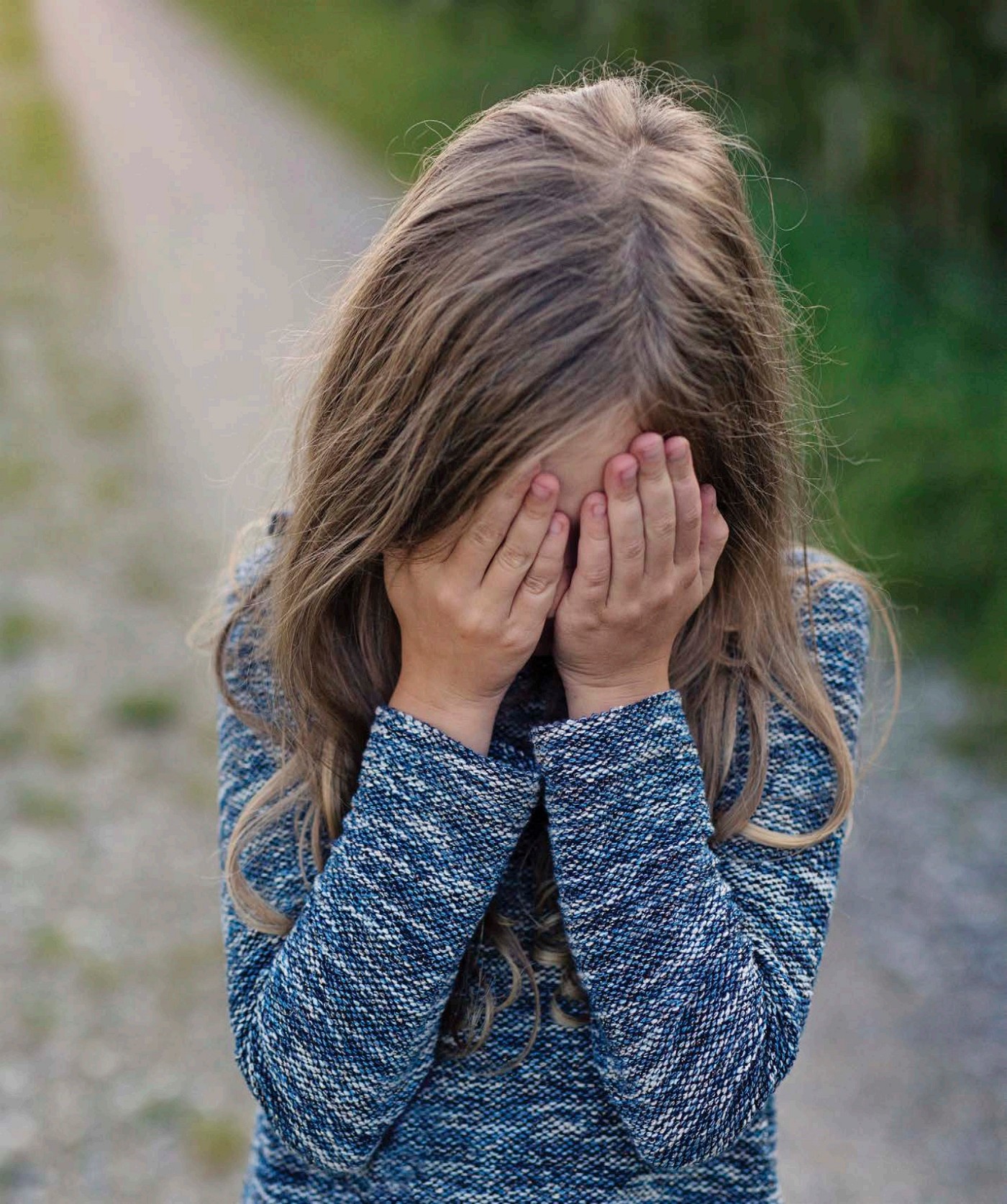 Thinking about obstacles sometimes makes us want to give up on solving our problems.
Thinking about obstacles sometimes makes us want to give up on solving our problems.
Even if a problem seems impossibly hard, its important to keep trying and working toward positive solutions. CHAPTER SIX PICKING THE BEST PLAN Once youve gone through your solutions list and picked the top two or three choices, its time to choose the best one to go with. After you decide which plan to use, hold on to the other ones in case you need a backup. One way to make your final decision is to use a pros and cons sheet. Draw a line down the center of a piece of paper and write down all the good parts of the plan on one side and all the bad parts of the plan on the other. The plan with the most pros and the fewest cons might be the one to go with.
Next page


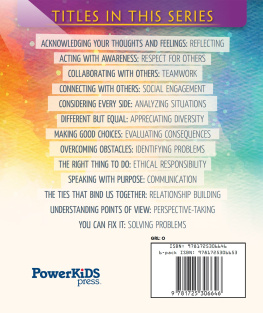
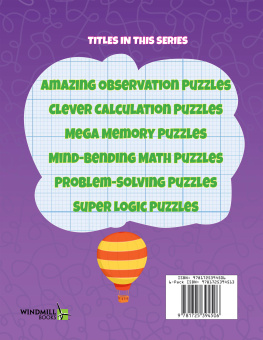




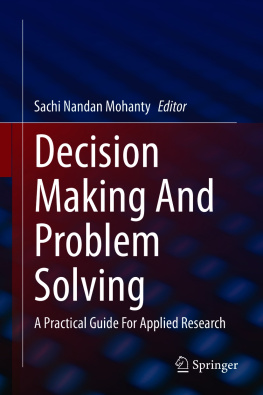




 Published in 2020 by The Rosen Publishing Group, Inc. 29 East 21st Street, New York, NY 10010 Copyright 2020 by The Rosen Publishing Group, Inc. All rights reserved. No part of this book may be reproduced in any form without permission in writing from the publisher, except by a reviewer. Editor: Rachel Gintner Designer: Michael Flynn Photo Credits: Cover PeopleImages/E+/Getty Images; cover, pp.. Library of Congress Cataloging-in-Publication Data Names: Klimchuk, David, author.
Published in 2020 by The Rosen Publishing Group, Inc. 29 East 21st Street, New York, NY 10010 Copyright 2020 by The Rosen Publishing Group, Inc. All rights reserved. No part of this book may be reproduced in any form without permission in writing from the publisher, except by a reviewer. Editor: Rachel Gintner Designer: Michael Flynn Photo Credits: Cover PeopleImages/E+/Getty Images; cover, pp.. Library of Congress Cataloging-in-Publication Data Names: Klimchuk, David, author. Sometimes problems create stress and cause panic. In these moments, its important to remember that everyone experiences problems and there are solutions at hand. CHAPTER TWO MAKING GOOD CHOICES Solving problems is a key part of growing up and learning responsible decision-making. Its easy to act quickly and impulsively, or without thought, when we dont know what to do or if were feeling scared. This sometimes makes the situation worse and doesnt get us closer to solving the problem.
Sometimes problems create stress and cause panic. In these moments, its important to remember that everyone experiences problems and there are solutions at hand. CHAPTER TWO MAKING GOOD CHOICES Solving problems is a key part of growing up and learning responsible decision-making. Its easy to act quickly and impulsively, or without thought, when we dont know what to do or if were feeling scared. This sometimes makes the situation worse and doesnt get us closer to solving the problem.
 Taking time to think about a problem and a healthy way to solve it can help you make better decisions. Learning skills for responsible decision-making can help you improve your life by decreasing stress and giving you something to be proud of. When you feel good about the decisions you make, youll be more likely to keep making the right choices in the future. Becoming a good problem solver takes time, but the more you learn and the more you practice, the easier it will be. CHAPTER THREE CHECKING IN WITH YOURSELF When we face a problem, we feel various emotions that change the way we think about the problem.
Taking time to think about a problem and a healthy way to solve it can help you make better decisions. Learning skills for responsible decision-making can help you improve your life by decreasing stress and giving you something to be proud of. When you feel good about the decisions you make, youll be more likely to keep making the right choices in the future. Becoming a good problem solver takes time, but the more you learn and the more you practice, the easier it will be. CHAPTER THREE CHECKING IN WITH YOURSELF When we face a problem, we feel various emotions that change the way we think about the problem.
 Pema Chdrn is a Buddhist teacher who encourages people to use breathing as a way to calm down and focus on the present. Once you label your emotions, you can calm yourself down so you can solve the problem.
Pema Chdrn is a Buddhist teacher who encourages people to use breathing as a way to calm down and focus on the present. Once you label your emotions, you can calm yourself down so you can solve the problem.
 When you write them down, problems may seem a little more familiarand maybe even easier to solve! CHAPTER FIVE WHAT CAN YOU DO? Now that youve calmed down and figured out what the problem is, its time to start coming up with solutions! The first thing to do is to come up with a list of as many ways forward as you can think of. Dont rule out any ideas or think about yet. Even if one of your ideas seems odd, put it on your list.
When you write them down, problems may seem a little more familiarand maybe even easier to solve! CHAPTER FIVE WHAT CAN YOU DO? Now that youve calmed down and figured out what the problem is, its time to start coming up with solutions! The first thing to do is to come up with a list of as many ways forward as you can think of. Dont rule out any ideas or think about yet. Even if one of your ideas seems odd, put it on your list.
 Thinking about obstacles sometimes makes us want to give up on solving our problems.
Thinking about obstacles sometimes makes us want to give up on solving our problems.